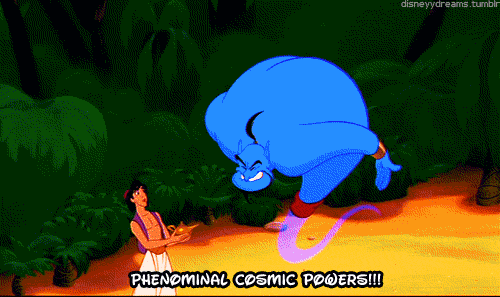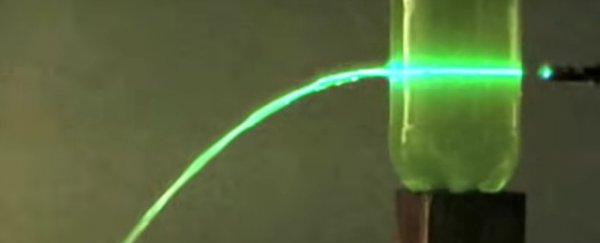
Lasers are the secret weapon of science - they're incredibly powerful, super versatile, and they can travel across incredible distances. But as this simple experiment shows, for all that power, it's actually possible to 'trap' a laser beam in water. And, yes, you can try this at home (as long as you keep that laser away from everyone's eyes).
As the University of Utah's Department of Physics and Astronomy shows in the video above, all you need is a plastic bottle filled with water, a pin, and a laser pointer (once again again, not for eyes).
Just poke a hole in the side of your bottle, allowing a stream of water to smoothly shoot out, and then aim your laser through the bottle, and you'll see it get caught up in the cascading waterfall and curve downwards with it, interrupting its usually straight path.
"Placing one's hand into the stream should reveal the laser light shining on your skin, and mixing in a little scattering agent (such as Pine-Sol or milk) can make the beam more visible," writes the department's YouTube channel.
So what's going on here, other than a bad-ass party trick?
This is an example of total internal reflection, which occurs when a beam of light hits a medium boundary (the edge of the water spout) at a particular angle, so it reflects, rather than passes straight through. This happens over and over again as the light hits each boundary, so the laser remains caught in the waterfall.
From a physics perspective, there are two requirements for total internal reflection to happen. First of all, the light must be inside a more dense medium, and also approaching the boundary of a less dense medium - so travelling from water into air, for example.
And secondly, the light must hit that medium boundary at an angle greater than something called the 'critical angle'. That angle changes depending on what type of mediums you're working with, but you can see a diagram of how that works below. (For those who are really keen, you can calculate the critical angle of a particular medium boundary using Snell's law.)
 Josell7/Wikimedia
Josell7/Wikimedia
That's all fascinating, but the coolest part about this whole experiment is that it's actually a perfect demonstration of how optical fibres work - you know, the fibres that're inside those cables that give us the internet.
Because they're made up of long fibres of glass or plastic, these fibre optic cables can trap beams of light, just like the waterfall does in the video above, and can guide it anywhere its needed. And that's useful, because we can encode things like the latest episode of Game of Thrones in that light.
So next time you stream something on your computer or download (legally, of course) an episode of your favourite TV show, remember to thank the poor laser that got stuck inside your cable to deliver that information to you.
Physics, you're awesome.
 Aladdin/Walt Disney
Aladdin/Walt Disney
